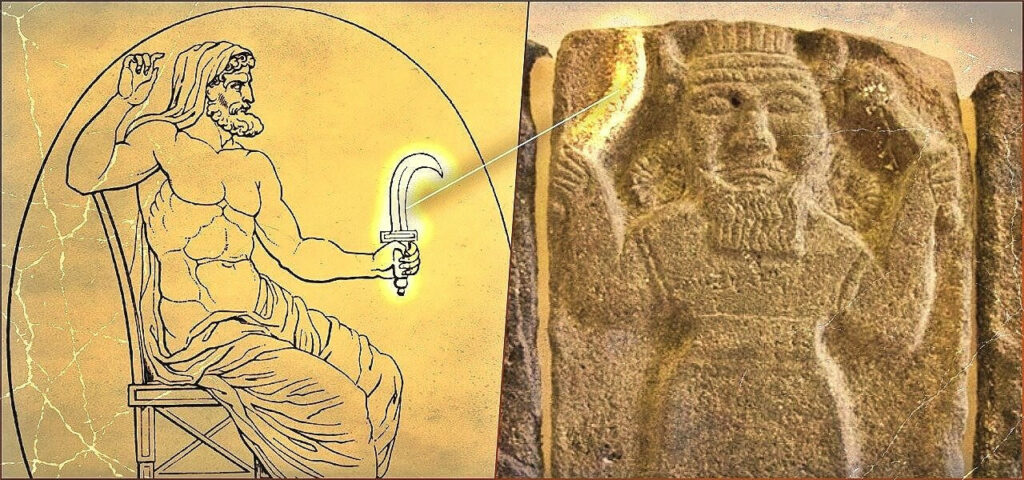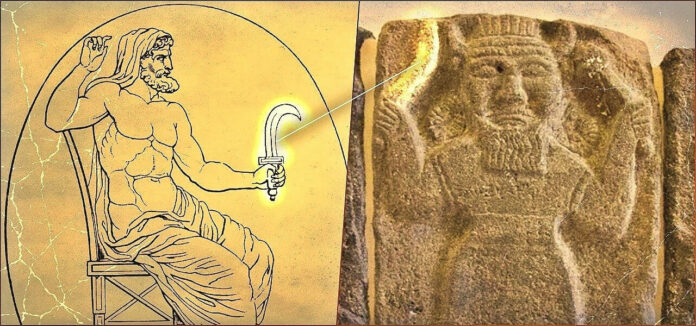The Celestial Power Struggle
In the annals of ancient mythology, two divine figures stand out for their striking similarities: Kumarbi, the Hurrian-Hittite god, and Cronus, the Greek Titan. Their tales, separated by geography yet united in theme, weave a fascinating tapestry of celestial power struggles and divine succession.

The Cycle of Heavenly Rule
Both Kumarbi and Cronus played pivotal roles in the cosmic order of their respective pantheons. Kumarbi, in a violent act of rebellion, overthrew the sky god Anu, while Cronus deposed his father Uranus. These acts of usurpation set in motion a cycle of divine succession that would shape the mythological landscape of the ancient world.
A Taste of Power
In a bizarre twist of fate, both deities resorted to unusual methods to maintain their power. Kumarbi, after dethroning Anu, swallowed his genitals in a symbolic act of dominance. Cronus, fearing a prophecy that his own children would overthrow him, swallowed them whole. These acts of consumption, while gruesome, highlight the lengths to which these gods would go to cling to their celestial thrones.
Birth of a New Order
From the Body of the King

The myths take an even stranger turn when it comes to the birth of new deities. Kumarbi, having swallowed Anu’s genitals, later gave birth to the storm god Teshub through his skull. This peculiar method of birth finds a parallel in Greek mythology, where Zeus gave birth to Athena from his head.
The Rock Trick
In both mythologies, we find the motif of a god being tricked into swallowing a rock instead of a deity. This clever deception plays a crucial role in the eventual downfall of both Kumarbi and Cronus, paving the way for a new generation of gods to take power.
Cultural Crossroads
A Shared Mythological Heritage
The similarities between these myths are too numerous to be mere coincidence. Scholars like E. O. Forrer, H. G. Güterbock, and Gary Beckman have long recognized the connections between the Kumarbi Cycle and Hesiod’s Theogony. Their work suggests a shared mythological tradition that transcended cultural boundaries in the ancient world.
The Mediterranean Melting Pot
Rather than direct borrowing, some researchers propose that these shared elements belonged to a broader Mediterranean cultural milieu. This perspective highlights the fluid nature of mythological narratives, adapting and evolving as they traveled across different cultures and contexts.
Legacy of the Divine Drama

The tales of Kumarbi and Cronus continue to captivate us, not just for their fantastical elements, but for what they reveal about ancient cultures’ understanding of power, succession, and the cyclical nature of rule. These myths, with their violent overthrows and bizarre births, speak to timeless themes of ambition, fear, and the inevitability of change.
As we delve into these ancient stories, we find not just entertaining tales, but windows into the minds of our ancestors, their fears, hopes, and attempts to make sense of the world around them. The parallels between Kumarbi and Cronus serve as a reminder of our shared human heritage, where stories transcend borders and time to touch on universal truths of the human experience.

